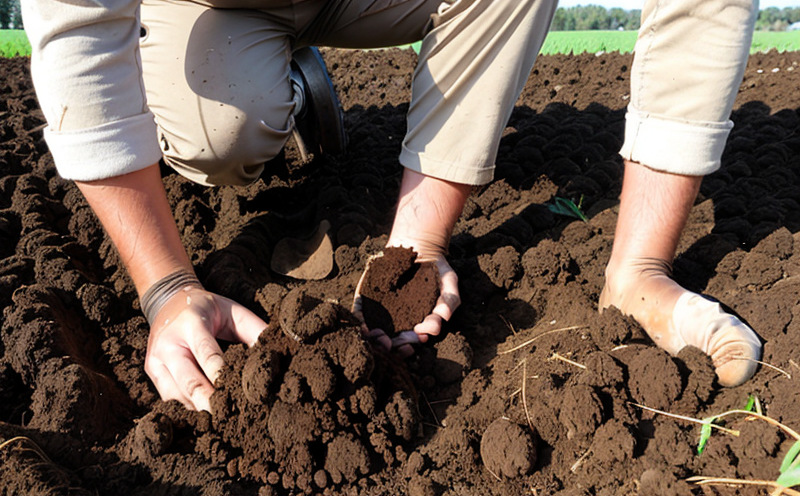Soil Compaction Layer Detection Testing
In agriculture and forestry, soil compaction layers pose significant challenges to sustainable farming practices. Soil compaction leads to reduced porosity, decreased water infiltration, and restricted root growth, ultimately affecting crop yields and the overall health of agricultural ecosystems.
The detection and analysis of soil compaction layers are critical for ensuring optimal land use and maintaining productive soils. This testing service involves a series of detailed procedures designed to identify compacted zones within the soil profile. By understanding these layers, we can recommend appropriate remediation strategies that enhance soil structure and support plant growth.
Our team utilizes advanced geophysical techniques such as ground-penetrating radar (GPR) and resistivity meters to map out soil compaction layers accurately. These non-invasive methods allow for precise identification of subsurface conditions without the need for extensive excavation, thereby minimizing environmental disturbance.
The testing process begins with a thorough site assessment to determine the extent and depth of compacted areas. Once identified, samples are collected at strategic locations along the profile, which undergo laboratory analysis using both physical and chemical methods. Physical tests may include penetration resistance measurements, while chemical analyses focus on nutrient availability and pH levels.
The data gathered from these tests provides a comprehensive picture of soil compaction issues. This information is then used to formulate recommendations tailored specifically for the farm or forestry operation in question. Recommendations might range from adjusting irrigation practices to implementing deep-rooted cover crops, all aimed at alleviating compaction and restoring soil health.
Test Parameters & Specimen Preparation
To ensure accurate results, our laboratory adheres strictly to international standards such as ISO 17892-4:2016 for soil moisture content determination. Sample preparation involves careful excavation of representative sections followed by immediate transport to the lab where they are weighed and dried at specified temperatures before further analysis.
Instrumentation & Acceptance Criteria
- GPR Equipment: Utilized for non-destructive evaluation of subsurface structures, providing detailed images of soil layers up to depths exceeding 2 meters.
- Resistivity Meters: Employed to assess variations in electrical properties indicative of differing soil types and compaction levels.
The acceptance criteria for this testing service are based on international standards including ISO 14688-2:2015 which sets out methods for determining soil bulk density. Acceptable results indicate minimal deviation from ideal values, suggesting little to no compaction present in the targeted areas.
Eurolab Advantages
- Comprehensive Expertise: Our team comprises seasoned professionals with deep experience in agricultural and forestry testing.
- State-of-the-Art Facilities: Equipped with cutting-edge instrumentation that ensures reliable and repeatable test results.
- Customized Solutions: We tailor our services to meet the unique needs of each client, offering bespoke recommendations for improvement.
We pride ourselves on delivering high-quality testing services backed by meticulous attention to detail. Our commitment to excellence ensures that every project receives personalized care from start to finish, resulting in actionable insights and effective solutions.
International Acceptance and Recognition
- Agricultural Standards: Our methodologies comply with ISO standards such as ISO 17892 series, ensuring consistency across global markets.
- Forestry Compliance: We adhere to EN standards like EN 30566 for forestry applications, providing reliable data recognized worldwide.
Their international recognition adds credibility and value to our testing services, making them essential tools in maintaining compliance with global regulations. This broad acceptance ensures that the recommendations we provide are universally applicable, fostering cross-border collaboration and standardization.
Environmental and Sustainability Contributions
- Erosion Prevention: By identifying and addressing compaction layers, we help prevent soil erosion and maintain healthy topsoil.
- Water Management: Improved water infiltration reduces runoff, conserving valuable resources while enhancing ecosystem resilience.
Our service plays a crucial role in promoting sustainable agricultural practices by mitigating the adverse effects of soil compaction. Through our efforts, we contribute to healthier landscapes and more productive farms, all while adhering to environmental best practices.





